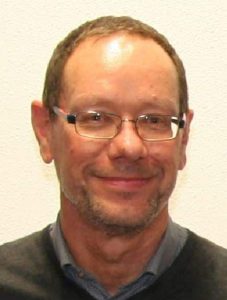[Interview] Challenges and Trends in the Oil & Gas Industry
Frans Martens, Industry Expert, reports on the developments in the Oil & Gas Industry

Frans Martens
Frans has 35 years of experience in both the upstream and as well as the downstream parts of a major oil and gas company, working in the Netherlands, Germany and Oman. His knowledge and experience cover field devices, telemetry, process control systems and final elements such as control valves and actuators for on/off valves. Frans has been involved in standardization work, vendor and product acceptance work, the development and delivery of training courses. As of January 2017, Frans is self-employed as an independent consultant to the industry. Frans holds a bachelor’s degree in electrical engineering and telecommunication.
Email: information@fransmartens.nl
Read the complete interview with Frans Martens and Tim-Frederik Kohler
Greatest Challenges
Tim-Fredrik Kohler:
Frans Martens, you are one of the experts in the industry when it comes to field instrumentation in the oil- and gas industry. What were your greatest challenges in your career?
Frans Martens:
When working in a very large company that is dealing with complicated and often hazardous processes changes go very slow. The way that things are normally done is based on good experiences in the past and the drivers for implementing a change must be very large to offset the tendency to keep on doing business as usual. Many changes come with a certain level of risk. It may be a commercial risk, or a technical risk. Or simply an organisational risk that relies on people on many levels having to do things differently.
I have learned that implementing a change that makes life easier on the work floor is more likely to be a sustained success than something that requires extra steps, actions, checks and documentation. Even when the improvements of such extra work can be demonstrated. Also, dealing with different cultures is a challenge. In some cultures the work ethic is based on (blindly?) following what the leadership wants. In other cultures the workforce may operate more independent and autonomous and will require strong leadership to accept a new way of working.
Another challenge is to accept the fact that different sites and different cultures may best be served with local (point-) solutions. A few examples from a technological point of view. In the company I worked for it took for instance almost two decades to achieve a global acceptance of the use of ultrasonic flow measurements.
On a refinery in Western Europe this new technology is quickly accepted. But a maintenance technician in a third world country may want to keep on using his tissue and a screwdriver to fix a pneumatic differential pressure transmitter. Ultrasonics may be seen as a threat to his capability and position. He may resist use of such new technology.
The same will apply to the engineering contractor who is familiar and confident with designing and building traditional technology. Use of new technologies will require them to re-think the design process and accept a certain amount of design-risk in case things won’t work properly. The risk is theirs, the benefits are for others.
Importance of Safety
Tim-Fredrik Kohler:
Right – this is plausible. Ok, based on what you have just said, how do you see the difference in the different world regions when it comes to Safety? We have the feeling that safety has a much higher ranking in Europe and the US as compared to other parts of the world. Especially when it comes to our products such as DBB Valves and Instrumentation Valves and Manifolds.
Frans Martens:
Safety is a value that is deeply embedded in responsible companies. However, it usually comes with a price-tag. An important aspect of safety is compliance.
In some countries the regulatory authorities and also the legal system raise the efforts required to remain compliant. In developing/third world countries such a compliance driver may be less strong or even absent and as a result, less effort is required to comply. Of course there may be an approach of ‘one global company – one global policy’ but that comes with a significant price tag.
In this world of low oil prices cost is a major factor towards the success and profitability of a company. That effect is also taking place in the design of facilities. Comparing an identical project done in Western Europe and one in the Middle East will inevitably lead to differences in regulatory requirements and acceptable ways of working.
Labour cost may differ by an order of magnitude. In a low labour cost environment the justification for automation is more difficult. The primary driver for automation may simply be to avoid road traffic incidents. The requirements on controls and reporting of emissions are generally lower.
You may have heard about designing based on the ALARP principle when dealing with risks. ALARP means ‘as low as reasonably practical’. As a practical joke, sometimes it is explained as ‘as low as regulators permit’.
Adaptation of Fugitive Emission Standard
Tim-Fredrik Kohler:
This is very interesting – and how do you see the trend in the industry towards implementing standards to reduce the fugitive emissions on production sites around the world? Do you see a difference in adopting standards such as ISO 15848 in e.g. Europe and the US in comparison to for example Middle East and China?
Frans Martens:
Dealing with fugitive emissions is typically a worldwide challenge and requires a global approach.
However, avoiding a ton of fugitive emissions in a North American refinery may be much cheaper than avoiding the same amount in an oil field in the Far East. The complexity and the nature of the physical distribution of the equipment is totally different.
The same applies to for instance manual valves and control valves. Meeting fugitive emissions class A for a quarter-turn manual valve at room temperature is relatively easy. Achieving the same for a control valve is much more complex due to the fact that the stem/shaft is moving frequently.
Recognising that for every control valve there are around 10 manual valves – the focus on fugitive emissions control should be on the manual valves. It is easier to achieve a particular reduction in emissions on that equipment. It is simply a more sensible investment towards compliance and reduction.
Top 3 Trends and Challenges
Tim-Frederik Kohler:
This is a good point. Great – ok last question for today. What do you think are the top 3 trends and top 3 challenges in the industry in 2017?
Frans Martens:
My personal top 3 trends are new measurement technologies that are non-intrusive, more effective use of diagnostics and remote maintenance and the de-manning of facilities in order to save cost and reduce HSE exposure.
Especially in oil fields with a very high concentration of the toxic hydrogen sulphide gas there is a need to use measurement technologies that are non-intrusive. In other words, no connections into the process are required. Ultrasonic flow measurement with external transducers is an example, use of gamma-rays to detect levels in vessels another. Already use is being made of external sensors to detect pressures based on stresses in the pipe wall. External temperature measurements are frequently applied.
The use of non-intrusive technologies and more effective diagnostics will avoid having to send technicians out into the field to clean out or adjust the instruments. They will simply become ‘install and forget’ items.
That, in turn, would eventually lead to facilities that can run without maintenance for a certain period of time and any necessary inspections, repairs or replacements could be done in a brief turnaround. A bit like how we deal with our cars. Zero maintenance, once per year into the garage for service.
Those companies that will be able to successfully implement these changes will remain profitable.
I would like to add on my personal top 3 with regards to near-future challenges for the industry.
Tim-Frederik Kohler:
Great – please go ahead.
Frans Martens:
As a result of the sustained low oil prices the pressure on cost will remain very high for the oil and gas industry and the spending levels will remain low. At the same time, regardless of the low cost of energy we are seeing big shifts in the way society deals with energy consumption and production. The point of no return has passed in many parts of the world. The people, communities and even the industry are moving faster than the legislation which is very uncommon and sometimes even slowing down change.
Finally, not a big surprise but still shocking to the world was President Trump’s decision to leave the Paris accord. This will have a significant impact on the GHG emissions and indirectly on the price of oil and the economics of the energy transition. We may see a split into a ‘black’ and a ‘green’ energy economy.
High Pressure on Price
Frans Martens:
Tim, now I would like to ask you a question. As I just mentioned – pressure on price is definitely an issue this year and beyond 2017. Is a manufacturer like AS-Schneider able to reduce costs without compromising on quality and safety?
Tim-Frederik Kohler:
Good question, let me try to explain. Nowadays everybody talks about Industry 4.0. This is nothing new to us, we have fully automated production lines where intelligent robots do even deburr the components we manufacture 24/7 – this is operational excellence.
We understand that Industry 4.0 is not just about automation, it is about the interconnectivity of different systems in a collaborative network environment paired with artificial intelligence and analytics. We plan to invest more in this area to always stay ahead of our competition. In other words, yes, we are competitive through early technology adoption and of course an optimized supply chain.
Having said that, we have more and more problems to compete against companies who simply copy our products 1 to 1. They do not operate a big R&D department, test centres etc. They do not necessarily know what they are actually doing. They don’t know the background of why certain features are important. They just copy them, assemble the valve and sell it rock bottom.
We believe that if we are able to demonstrate that we are not just a machine shop, but that we actually know what we are doing and why we are doing it, we will be seen as technology leader and trusted advisor. I hope that companies like AS-Schneider with over 140 years of experience in manufacturing and developing high quality products are valued by end users in a different way than companies who just copy and paste without knowing what they are doing. 140 years, this is a huge legacy.
Tim-Frederik Kohler:
It looks like we’re about out of time Frans – Thank you so much for this enlightening discussion. I’m looking forward to our next meeting where we discuss interesting topics of the Valve Sector.
Frans Martens:
You’re welcome Tim. See you soon again.
Tim-Frederik Kohler:
Thanks!
(Images source: © Makhnach / fotolia + AS-Schneider/ Frans Martens)

